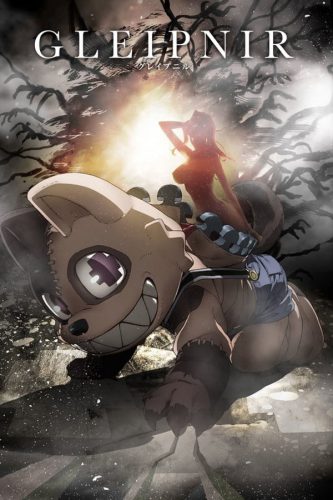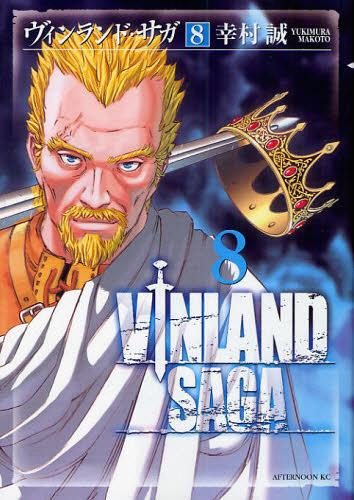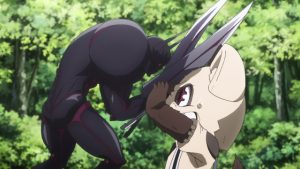
Anime is a diverse medium with all kinds of stories. Like any other storytelling medium, anime makes use of several devices to tell a story, including making references to other media of various kinds. Mythology is a great well of inspiration in various contexts, and anime is definitely no stranger to the use of mythology in many instances, particularly mythology of the Norse variety.
That brings us to the 2020 Spring title Gleipnir, a strange and violent story about a high schooler who transforms into a monster resembling a giant wolf mascot costume that even has a zipper on the back. What does any of this have to do with Norse mythology and what does it say about the relationship anime has with Norse mythology overall? The answer is varied and interesting, so let’s get into it!
Subtext

An obvious clue used in anime to point towards myth is the use of known mythological jargon—the names of deities, spirits, occult concepts et cetera used in the context of the anime in question. “Gleipnir” for instance refers to the Norse myth concerning the binding of the monstrous wolf Fenrir. The Norse gods had caught wind of prophecies concerning Fenrir and deemed it appropriate to bind him but on two occasions, Fenrir broke free from the chains. The dwarves were then tasked with the forging of a chain that is impossible to break, using six things deemed to be impossible like the breath of a fish or the roots of a mountain. This chain was named Gleipnir–“open one”.
The context of the Gleipnir myth is very interesting when considering Gleipnir the anime because co-protagonist Kagaya Shuichi transforms into a monster mascot costume greatly resembling a toon wolf. In episode 2, the nature of Shuichi’s transformation is also a nod to the Gleipnir myth as protagonist Aoki Claire literally unzips Shuichi in his transformed state to find that it is open space, like in an actual mascot costume. Episode 2 is titled “The Meaning of Emptiness”, nodding towards the Norse myth overtly and covertly, Gleipnir (the anime).
Other shows nod towards Norse mythology in the way that Gleipnir has, adopting the name of a mythological concept and tying the show’s premise, characters, and development to that myth in allegorical fashion. Another show that does this with Norse mythology specifically is Jormungand, an anime about an arms dealer and her child-soldier companion. The name translates to “huge monster” and when considering how the protagonist sells arms for an international shipping corporation, the image of a large serpent encircling the world makes sense. Other shows that do this include Ragnarok the Animation, named after the apocalypse in Norse mythology; Valkyria
Characters

Sometimes, the relationship an anime establishes with mythology is through characters. We’ve seen this in other media countless times; however, anime uses mythological references in diverse ways. Characters inspired by Norse myths in anime include the Nordic pantheon card series in Yu-Gi-Oh! which includes cards named after Thor and Odin; the Norse pantheon in Highschool DxD; 2019 saw the eruption of the anime Vinland Saga, which was set in Scandinavia and features the Viking character known as Askeladd, based on Norwegian folktales of a character of the same name who begins as an underachiever but eventually gains lots of respect and admiration when they succeed where all else have failed. The commitment to mirroring the lore or themes present in the relevant mythological construct varies by title, but there is an undeniable relationship that anime has with Norse lore.
Sometimes characters aren’t representations of the Norse myths themselves but borrow from them. In the case of Love, Chuunibyou and Other Delusions character Dekomori Sanae, her signature “attack” is the Mjolnir Hammer—two weighted bags tied to the long ponytails that she uses like flails named after Thor’s famous mallet.
Final Thoughts
While Gleipnir is a current example of Norse mythology having influence in anime, there is a wide array of shows that find themselves in the conversation for gathering inspiration from the same place; however, the relationship with Norse lore can vary, creating an interesting spectrum of shows that have taken light to heavy doses of Norse mythology inspiration. What shows have you seen with themes from Norse mythology? Drop a comment below, we’d love to hear your thoughts!
Recommended Post
6 Anime Like Gleipnir [Recommendations]
Recommended Post



